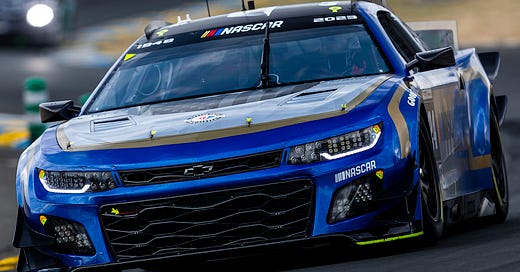Insight: Ensuring NASCAR Garage 56’s Safety at Le Mans
The FIA’s technical director explains the work that went into ensuring NASCAR Garage 56 complied with Le Mans safety requirements…
The NASCAR Garage 56 project was a fan favorite of this year’s 24 Hours of Le Mans, bringing novelty and plenty of noise to the grid. Jenson Button, Jimmie Johnson and Mike Rockenfeller completed 285 laps in the heavily modified Chevrolet Camaro ZL1 NASCAR Cup car, which exceeded pace expectations by out-qualifying the GTE-Am field.
But for those storylines to play out, the unique car’s safety first needed to be ensured. This required close collaboration between its developers – NASCAR, Hendrick Motorsports and chassis supplier Dallara – and the FIA which manages the technical regulations of the categories racing at Le Mans. Their combined efforts were integral in NASCAR returning to the Circuit de la Sarthe after almost half a century away.
“Our main redline was to take the best practice from both sides of the Atlantic,” explains FIA technical director Xavier Mestelan Pinon, whose organization was asked by Le Mans organizer the ACO to advise on the safety of NASCAR Garage 56.
“Of course, for all the main safety requirements regarding this car, we clearly asked NASCAR and Hendrick to make all the adaptations needed. But for some other matters, like the seat, we considered that their technical choice was something very relevant for such a car. We just tried to take the best from each regulation.”
The FIA started liaising with NASCAR Garage 56 in early 2022 and quickly determined that the Gen 7 platform was close to GT3 in terms of safety specifications. Or, at least, closer than the prototype formulas.
It compared the two technical rulebooks, assessing different parameters and identifying where the Hendrick-run Camaro needed to be modified. Weight reduction was one of the FIA’s key requests, considering the lower base weight of the Gen 7 is around 151 kg higher than the heaviest GTE-Am car at this year’s Le Mans, the Porsche 911 RSR-19.




